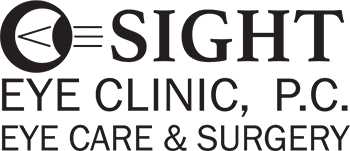Pediatric Eye Care
Healthy Sight for ChildrenEye health is important your whole life, no matter how old—or young—you are.
Children’s eye care helps address eye and vision issues that could have consequences lasting into adulthood. It’s more than just regular checkups to see if your child needs glasses; it’s about identifying and addressing problems before they have the chance to become long-lasting or serious.

When Should I Start Having My Child’s Eyes Examined?
It should go without saying that good vision is important for a child’s growth and development. The earlier a potential issue is identified and treated, the less of an impact it is likely to have in the future. While you should never hesitate to call us at any signs of problems with your child’s eyes or eyesight, it is also important to have routine professional exams. This way, we may be much more likely to identify, monitor, and/or treat conditions that may have otherwise gone unnoticed. Primary care physicians will screen children for visual acuity and alignment issues. If a parent notes any alignment issue, or if a child has any sign of poor vision, they should be brought to the eye doctor. A routine exam at the time of entry into school is a good idea, but not a requirement if they do well on visual screening at the pediatrician’s office. As part of a regular children’s eye exam, we will often test:- Visual acuity at different distances
- Color vision
- Stereo acuity
- Accuracy of eye movement
- Whether the eyes can accurately and comfortably focus on objects
- Whether the eyes are accurately coordinating their movements and working together.

Common Eye Problems for Children
Certain eye issues are particularly common in children. These problems affect and can limit your child’s sight or eye comfort. In some cases, the condition won’t improve or go away without treatment. Fortunately, most conditions are highly treatable when caught early, allowing your son or daughter to grow up with healthy eyes and clear vision. Here are some of the most common pediatric eye issues children could develop:- “Lazy Eye” (Amblyopia) – This typically happens when one eye is not seeing as clearly as the other. This could be a result of an uncorrected refractive error (your child needs glasses), or because one or both eyes are not properly aligned. As a result, the brain starts to ignore the information coming from the “weaker” eye, turning it “lazy.” The vision loss in the weaker eye can be permanent if the condition isn’t treated early enough.
- “Crossed Eyes” (Strabismus) – This is a problem with malalignment in your child’s eyes. One eye may look straight forward, while the other appears to look in, out, up, or down. If the eyes are not perfectly lined up together, one eye will develop weaker vision than the other.
- Refractive errors – Just like adults, children can have trouble with blurry vision from nearsightedness, farsightedness, and astigmatism. This can impact your child’s ability to do well in school and play safely. Correcting the vision with glasses is important for helping your child to see clearly.
- Chalazions and styes – Though slightly different, both conditions result in sore, painful red bumps on your child’s eyelids. The bumps are often sensitive to touch and may make blinking uncomfortable. In more severe cases they can distort vision.
- Blocked tear ducts – This is most common in newborns. A tear duct may become plugged and prevent tears from draining correctly, leading to a watery, irritated eye. This condition can resolve on its own, but sometimes it needs extra treatment to relieve the blockage.
- Pinkeye – Conjunctivitis, also known as pinkeye, is an infection on the surface of the eye. It may be a bacterial or a viral problem, and can be very contagious. Your child’s eye appears red or pink, itches, tears up, and might leak discharge as well. Occasionally it’s accompanied by cold symptoms like a runny nose and sore throat.
Get the Care You Need - Contact Our Office Today
"*" indicates required fields
